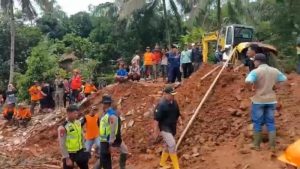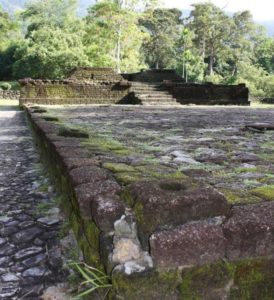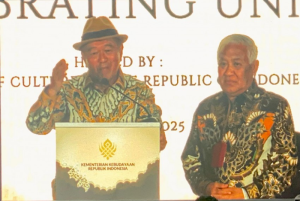
Built in 6th century AD, Candi Bukit Batu Pahat is the most well-known ancient Hindu temple found in Bujang Valley, Kedah, Malaysia.
Sungai Petani, 14 Rajab 1438/11 April 2017 (MINA) – Almost nine months have passed since the site of the Sungai Batu Archaeological Complex in Bujang Valley, near Merbok, here was declared as home to the oldest civilisation in Southeast Asia.
Also Read: Pakistan Declares State of War After Car Bomb Incident
Unfortunately, efforts to develop the site into a major tourist attraction are moving at a sluggish pace.
The fact that the archaeological site had immense tourism potential was apparent a decade ago after the relics of an ancient civilisation were unearthed by experts from Universiti Sains Malaysia’s (USM) Global Archaeological Research Centre.
However, last year five world-renowned archaeologists who were experts in the five main civilisations of the world – Mesopotamia, Indus, Mesoamerica, Chinese and Greek-Roman – confirmed that the Bujang Valley site was over 2,000 years old, thus rendering it older than Angkor Wat in Siem Reap in Cambodia which was built in the 12th century (900 years old) and Borobudur Temple in Yogyakarta, Indonesia, built in the ninth century (1,200 years old).
Kedah Tourism, Religious Affairs and Heritage Committee chairman Datuk Mohd Rawi Abdul Hamid admitted that the slow pace of activity at the archaeological site did not quite match the excitement created by the discovery.
Also Read: Jakarta Hosts Gala Dinner for World Peace Forum Delegates
“Actually, if the ruins there were 100 years old, it wouldn’t have been necessary for me to give any comments. Even if they were 500 years old, it can be deemed ordinary.
“But here we are looking at something that’s extraordinary from all angles because it represents (the oldest civilisation in) Southeast Asia,” he told Bernama.
Financial constraints
Mohd Rawi blamed financial constraints and inadequate funding from the federal government for the slow pace of work at the archaeological site.
“The truth is, the state government doesn’t have the financial means to undertake the development of the site, as well as realise its long-time aim of building a museum at Sungai Batu,” he said.
Also Read: Indonesian Minister Urges Synergy Between Wasathiyah Islam and Chinese Wisdom
He said the USM archaeological experts who were currently involved in excavation work at the site received an annual grant of RM500,000 from the federal government but the amount barely covered their needs.
Pointing out that the historical findings at Bujang Valley deserved more serious consideration at the federal-level, Mohd Rawi said the Cabinet should, in fact, discuss the possibility of turning the area into a popular tourist spot like the Borobudur Temple.
He said more than boosting tourism revenue, the ancient ruins would help enhance national identity and make Malaysians realise how great this country had been in the ancient past.
“There has to be serious discussions on how these (archaeological) findings can become the pride of the nation. At a time when the sense of identity among the people is at a low ebb comes along this discovery which reflects the Malay civilisation’s glorious past,” he said.
Also Read: New Delhi Covered in Toxic Smog: Residents Say ‘We Can Hardly Breathe’
Since embarking on excavation work at the Sungai Batu site, the USM archaeological team had made several imporant discoveries, like the remnants of iron-smelting facilities, port jetties and administrative buildings.
Among the more crucial discoveries unearthed by the team were the ancient brick monuments that featured a circular brick floor with a square brick structure on top which the experts confirmed dated to 110 century AD or 1,900 years ago. The archaelogists had used the Optically Stimulated Luminescence technique to determine the age of the structures, which had probably served as religious relics.
Also found at the site were wrecks of ships that must have plied along an ancient river that flowed through the Bujang Valley, which is also known as Kedah Tua (Old Kedah), a few thousands years ago. (T/RS5/RS1)
Mi;raj Islamic News Agency (MINA)
Also Read: Boat Carrying 100 Rohingya Migrants Capsizes in Malaysian Waters





























 Mina Indonesia
Mina Indonesia Mina Arabic
Mina Arabic